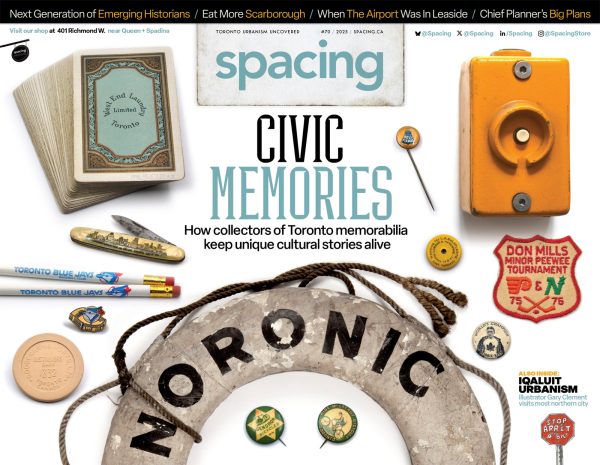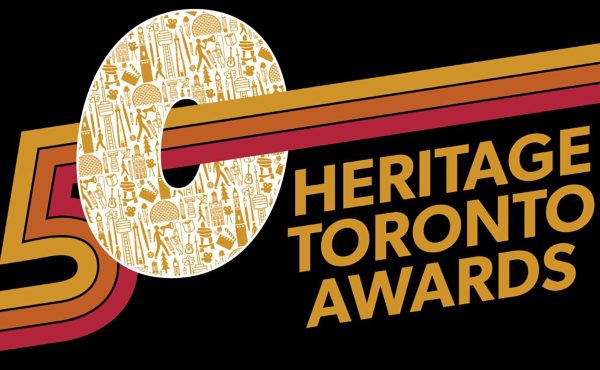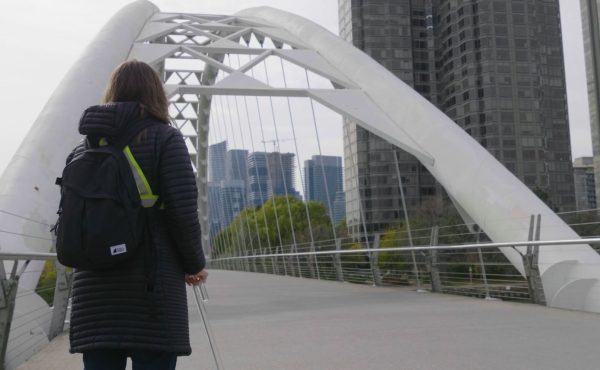When Spacing’s publisher Matt Blackett suggested an issue about collectors, I was skeptical. Was this really going to capture something essential about Toronto that would engage readers? But as soon as we started to get pitches, I was converted. It was delightful to get to know the interesting characters who are driven to bring together related artifacts, and to see what their collections reveal about distinctive slices of Toronto that we might otherwise overlook.
Matt was initially inspired by his time researching and photographing the Spacing book Packaged Toronto, and more recently by coming across Cliff Stunden’s staggering local milk bottle collection, which has far more significance than one might imagine. It harks back to when agricultural production took place right in the city, and speaks to commercial history, early product branding, recycling (back in the day when your empty bottles were collected when new ones were delivered), and public health – pasteurization of milk being one of Toronto’s first big public health initiatives. It’s easy to forget how pervasive dairies were in the city – I live across from the former site of one in the east end, and my aunt’s father ran one near St. Clair West. Delightfully, we were able to pair the milk bottles with another kind of glass – a collection of architectural glass through which the history of Toronto architecture is refracted.
A more recent enterprise – but one that is also fading as technologies and economies evolve – is the concert posters that once permeated the parts of town known for their vibrant music scenes. They are the kind of artifact that we rely on collectors to preserve – essentially ephemeral, something that would not normally survive. And yet they documented a thriving music scene – itself made up of events that might otherwise be lost to memory. While some posters are still made for concerts, their pervasiveness has faded with new technologies, and with it perhaps their distinctive creativity.
A more eclectic preserver of the ephemeral that has defined Toronto was Larry Becker, profiled by Wayne Reeves – himself a longtime guardian of collections in his former role as Toronto’s chief archivist. Becker’s collection ended up in the archives, but the ultimate destination of collections is always a significant issue. If they end up broken up and dispersed, the slice of insight they once provided can dissipate – it is the very nature of a collection that it gains strength and relevance as it expands, so that the various items speak to and reinforce each other. Sometimes, as with Michael Parke-Taylor’s concert posters, they are donated as a unit by the collector themselves. Sometimes dedicated heirs, like Becker’s, work assiduously to make sure the collection finds a home. Sometimes that work is still in progress, as with George Rust-D’Eye’s collection of Toronto books.
There’s a push and pull for any collector – the desire to see the collection find a good home, ideally one that enables others to enjoy it as well, and yet the difficulty of parting ways with something into which one has invested much of one’s time, energy, and emotion. Our goal has been to profile not just the collections, but also the collectors, and for the posters we were fortunate to have our collector himself, Michael Parke-Taylor, reflect on the origins and evolution of his collecting drive.
Most collecting is of physical objects, but one can also collect experiences – themselves ephemeral. We were glad to be able to profile the serial diners, who collected the experience of meals at Toronto restaurants in alphabetical order. While their collecting has been in abeyance since the pandemic, in our front section, we profile another collector of restaurants: Howard Tam finds the hidden gems of culinary Scarborough and shares them with visitors.
In the rest of our front section, we can perhaps discern some further collecting themes. Jeremy Hopkin, one of Toronto’s many collectors of historical stories, shares his account of Toronto’s little-known first commercial airport – in Leaside. Another collector of information is frequent contributor Steve Brearton, and we include an excerpt from his privately published alphabet of Toronto cycling lore. Shiri Yeung, meanwhile, profiles a collection of collectors – Heritage Toronto’s Emerging Historians program, which brings together and supports young people eager to learn about and share tales of Toronto’s past.
Each issue of the magazine is, in a sense, a collection of stories about Toronto, gathered from our city’s talented writers and photographers and presented to our readers. We hope you enjoy the pieces on display in this issue.
This issue is available now at the Spacing Store at 401 Richmond St. W., and soon at fine book and magazine stores, as well as arriving soon in subscribers’ mailboxes.




